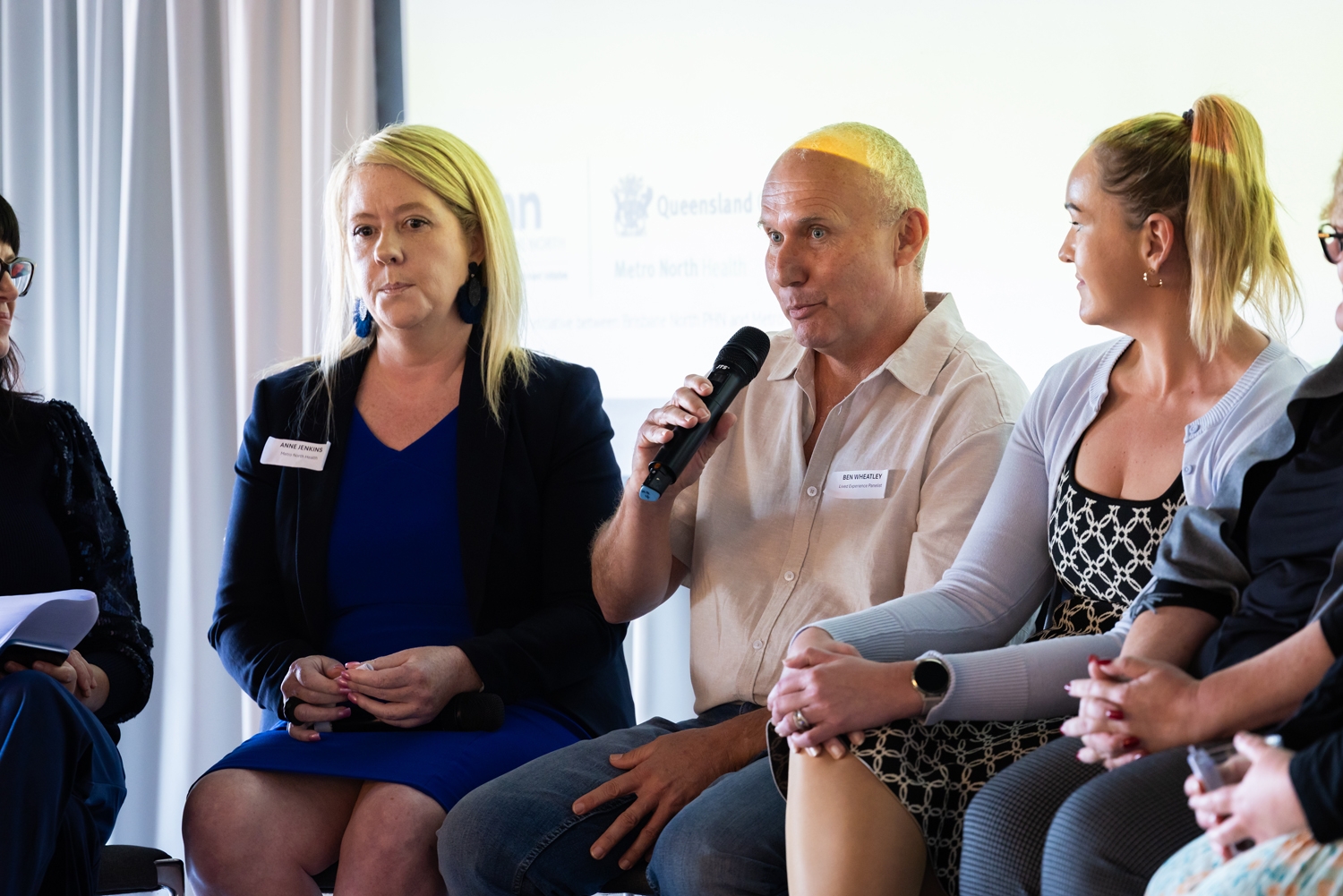Engagement kit launched to embed lived and living experience

In a first for PHNs across Australia, Brisbane North PHN has launched a Lived and Living Experience (LLE) Lifecycle Kit to support safe and meaningful engagement with LLE representatives.
Community voices and representation are a critical part of delivering on Brisbane North PHN’s vision – namely, ensuring good health is available to everyone.
The LLE Representation Lifecycle Kit was developed in partnership with Lived Experience Australia and LLE representatives, and provides a clear, practical framework for engagement across the full commissioning cycle.
What is LLE representation and why does it matter?
LLE representatives are those with personal health experiences who have accessed the types of primary care services commissioned by Brisbane North PHN. Representatives can also include family members, friends or supporters of someone with personal experience.
People with lived and living experience (LLE) are important stakeholders in shaping healthcare policy and practice. Their expertise and perspectives allow us to develop more relevant and collaborative health services.
‘The LLE Kit supports our strategic goal to be informed and led by community,’ said Executive Manager, Caroline Radowski. ‘By strengthening lived and living experience participation, we can build more responsive and person-centred systems of care.’
Ben Wheatley, who was involved in the creation of the LLE Kit and sits on Brisbane North PHN’s Community Advisory Committee, concurred. 'We’re not the experts, but we have expertise,’ he said.
‘It’s important to have a voice as to what works, what doesn’t work, and the challenges we’ve had. We’ll achieve better outcomes by considering the insights of the people who access these services.’
A framework for meaningful engagement
While Brisbane North PHN has worked with LLE representatives since 2017, we lacked an organisation-wide framework to guide this process. Feedback from previous LLE representatives highlighted the need for more consistency and clearer internal processes through all stages of engagement.
The kit was initially led by the Mental Health Strategy and Partnerships team and will be implemented across the organisation, including programs for aged care and chronic and complex diseases.
LLE engagement covers a broad spectrum of activities, from ad hoc opportunities like recruitment panels to formal partnerships such as assessment panels, co-design initiatives, and working groups.
While the engagement lifecycle isn’t always linear, it generally includes six phases: recruitment, induction, support, feedback and evaluation, exiting, and re-engagement.


Without a kit to guide engagement, we risked LLE participation being inconsistent or feeling tokenistic.
‘The kit was commissioned to strengthen our organisational infrastructure,’ said Caroline. ‘This will ensure that lived and living experience participation is safe, meaningful and embedded across all programs – not just mental health.’
How will LLE representation improve the healthcare system?
The LLE Kit ensures that Brisbane North PHN is guided by best practice in recruiting, supporting, exiting, and re-engaging LLE representatives.
‘The vision is for the LLE Kit to become a best-practice model that can be shared and adapted across other PHNs nationally,’ said Caroline. ‘We’ve already heard feedback that LLE representatives are much more satisfied with their engagement in our process, understanding the work they are consulting on, and ensuring they know the outcome.’
Crucially, the LLE Kit will provide a non-judgemental space in which representatives are heard and respected, while encouraging open communication about how programs are progressing.
‘Success would see more representatives from priority groups who want to be represented,’ said Ben. ‘They will feel comfortable providing insights in a safe way and will feel included and valued if they're engaged from the start.’
